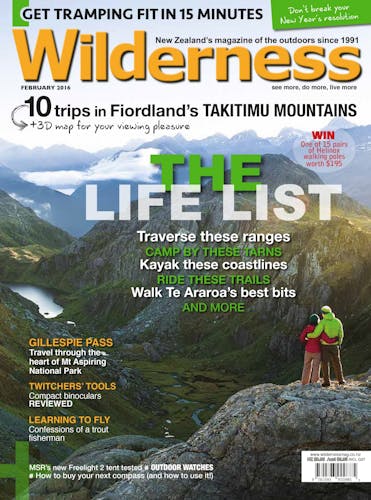When the weather’s good, camping above the bushline is a treat. It’s even better when the tops are capped with snow.
Choose your site
Your tent site should be in stable snow, safe from snow sloughs, and sheltered from the prevailing wind. Face the entrance away from the wind for a warmer tent and efficient cooking.
Preparing
Even in soft snow, a snow shovel will make levelling a site nice and quick. Stomping and distributing snow with your boots also works.
Pitching
Don’t bother with regular tent pegs. I find it useful to have 1.5m lengths of cord attached to my main peg points and tied around loose or exposed rocks and branches. Your ice axe, buried crampons, shovel handle, walking poles or a buried stuff sac filled with snow can anchor the tent.
Sleeping
If you have the option of pitching your tent on rock or snow, pick the rock as it will be warmer. Either way, an inflatable (preferably insulated) sleeping mat is the ticket to comfort. Closed cell foam is light and a thin or three-quarter mat can make a useful second layer of insulation. Putting your gaiters, parka, overtrousers and even your pack under your mat can make you cosier in really cold conditions.
Cooking
Your stove will run more efficiently if it’s off the snow. Finding a ‘cooking rock’ to put in the entrance of your tent helps, or use the blade of your snow shovel. Butane/propane cylinders don’t like the cold – cupping them with your hands can help keep pressure up.
Visit avalanche.net.nz for condition updates tips for staying safe in alpine terrain.








